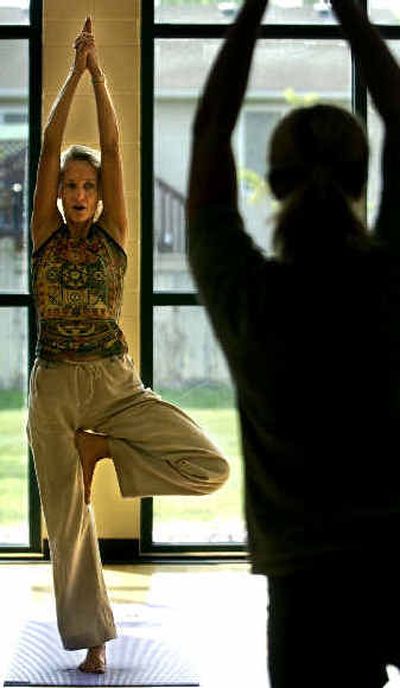Yoga profits an easy stretch

Having attracted the masses, yoga is now attracting big business.
Yoga, a 5,000-year-old discipline from India, is so mainstream USA that companies including Ford Motor, Pfizer and Clairol are pursuing well-heeled yoga devotees by advertising for the first time in Yoga Journal, the community’s leading magazine. Target.com sells 17 yoga DVDs. And like other big-name athletes, superstar yoga teacher Rodney Yee now is endorsing a consumer food product: Vitasoy milk and tofu. Yee is also featured in 26 yoga videos and DVDs.
“Yoga is at the top of its game,” says Dan Gurlitz, general manager of Koch Vision, whose distribution of Yoga Zone DVDs and videos is a “serious seven-figure business” for the private company.
Yoga Journal estimates that 15 million U.S. residents practiced yoga last year, up almost 30 percent from the year before. The explosion hit a couple of years ago shortly after Gucci grabbed headlines with $850 yoga mats it no longer sells. While yoga appears to be still growing in popularity, other fitness trends, such as the body-conditioning Pilates, are now more explosive, says the IDEA Health & Fitness Association.
Still, yoga has moved into the big time. Instruction is offered at 60 percent of U.S. fitness clubs. With 15 million participants, yoga has about half as many as aerobics does, says the Sporting Goods Manufacturers Association.
Yoga means to deepen feelings of well-being though a series of physical poses and a focus on the breath. Devotees can find plenty of accessories to help.
The yoga mat, preferred so that hands and feet don’t slide, runs from $10 for vinyl to $50 for natural rubber to $69 for natural cotton. Need a mat bag? $10 to $199 for leather. Yoga clothes, while stretchy, don’t have other features particular to the activity, as padded biking shorts do. Still, they’re all the rage. Think $55 “Zen flare” pants.
Big retailers have zeroed in on the market, long held by niche players. Gaiam, which markets yoga videos, equipment and health products, recently announced disappointing second-quarter revenue of $17 million, in part because of competition from Wal-Mart and Costco.
At REI, America’s No. 1 specialty outdoor store, sales of yoga mats, blocks and other props are up 98 percent this year over last. REI says yoga is the big driver behind a 70 percent expected jump this year for yoga and climbing clothes, down from a 134 percent jump in 2003 from the year before.
“Even large, mainstream apparel makers are putting ‘great for yoga’ on everything stretchy,” says Demian Kloer, general manager of Vista, Calif.-based prAna, which makes and sells clothing for yoga and rock climbing and was REI’s 2003 vendor partner of the year.
Yoga vacations are also going strong. The Kripalu Center for Yoga & Health in Lenox, Mass., claims to be the nation’s biggest yoga retreat center with room for 450 people. It expects guest stays to be up 12 percent to 18 percent next year from this year, which is running about 10 percent ahead of last year. Typical cost of a five-day yoga stay: $615 to about $1,200 depending on dormitory or luxury room.
Yoga Journal has likewise grown. The magazine, founded in 1975, has 310,000 subscribers, up from 90,000 in 1998. Thanks largely to new, big-company advertisers, national advertising is up 35 percent in the current 200-page issue from a year ago. It publishes seven times a year.
Soul-searching has accompanied the change.
“It’s like an oxymoron: yoga business,” says Elle Price, who recently began selling a self-designed $1,199 diamond pendant saying “Om,” a yoga chant.